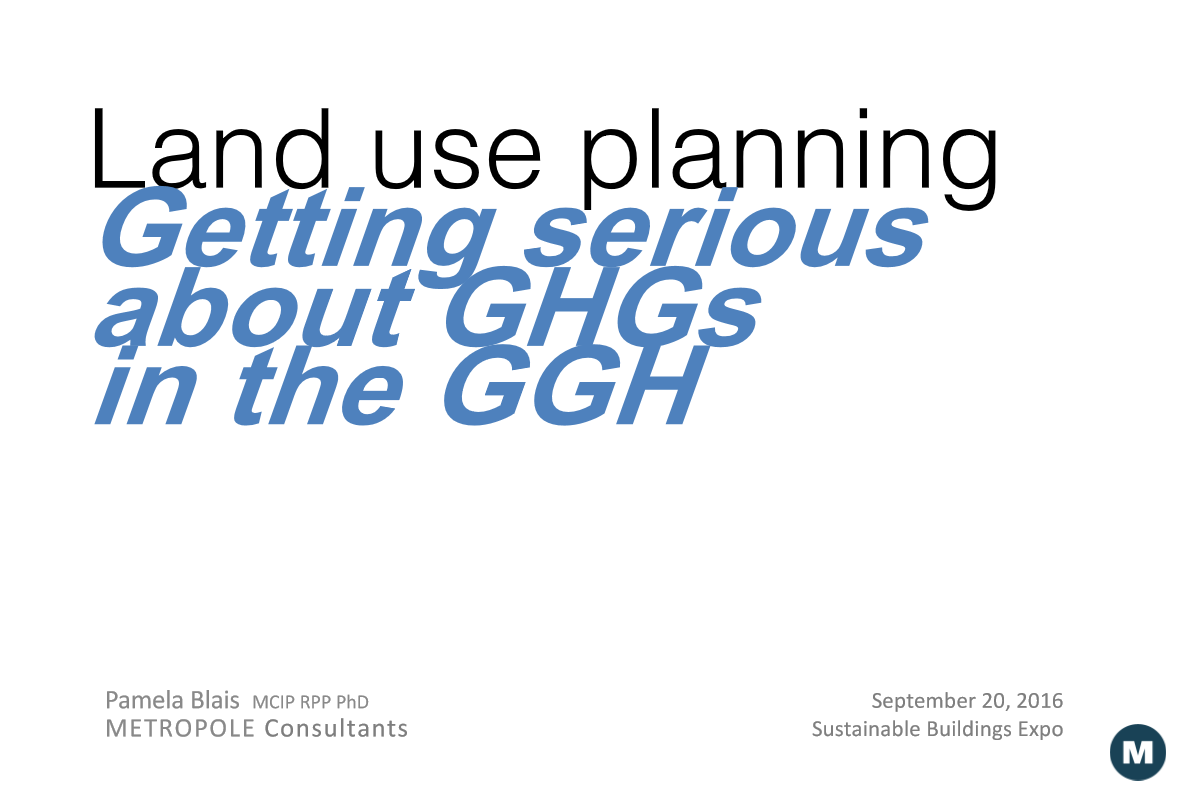SBE16: Toronto – Pamela Blais – Land Use Planning: Getting Serious About GHG Reduction
We were happy to attend the Sustainable Built Environment Conference September 19th and 20th in Toronto. There was so much material and interesting ideas that we decided to do a series of blog posts re-capping the presentations.
The first post is on a talk that Pamela Blais, of Metropole Consultants gave entitled “Land Use Planning: Getting Serious About GHG Reduction” which talked about how large scale urban planning of the Greater Golden Horseshoe Region can have a significant impact on the overall Green House Gas Emissions of the Region.

Notes from the Presentation follow:
- – Ontario lowered their emissions by 6% below the 1990 reference year in 2014, but we have significantly more aggressive reduction targets: 80% reduction by 2050.
- – Transportation accounts for a very large portion of the energy used in Canada: “2/3 of GHG emitted by Canadian Households are from transportation vs 1/3 from running the home (heat, electricity)” and GHG’s from transportation have INCREASED over the last 25 years while those from running the home have remained constant.
- – If all other variables are held constant except having a household change to a more accessible location then GHG’s can be reduced by 36%.
- – A “green house and green car” in a suburb still consumes more energy then a conventional house/car in an accessible location.
- – The current plan for the development of the region is the “Growth Plan from 2013” prepared by the Ontario Government and “The Big Move” prepared by Metrolinx.
- – The Growth Plan contains 25 urban growth centres with density targets, provisions for 40% new housing units within the already-urban areas and minimum greenfield density targets.
- – “It’s cumbersome” — it requires each municipality to ratify, develop their own plan, and conduct a 10 year review. The majority of Municipalities have not begun the 10 year review.
- – Unfortunately development has not happened as planned around the “urban growth centers” but instead has happened in totally different areas — in the Greater Toronto Area it is mostly within the Airport Megazone around Pearson which has over 1 million auto-trips per day. Transit was focused on these “urban growth centers” not on the actual areas receiving the most car trips.
- – Updates to the Growth plan are increasing the density and greenfield targets, and are incorporating climate change considerations.
- – Cities are changing: making areas more accessible, multi-modal.
Overall Ms. Blais suggests:
- – A vision that is ambitious and realistic
- – We put transit in the right places
- – We don’t undermine transit investments with highway investments.
- – Large-scale proactive rezoning of strategic areas
- – Integrate jobs/housing locally in new suburbs
- – Have flexible planning tools
It was a great presentation and we think that particularity the point about the Airport Mega-zone receiving the most riders within the GTA, yet falling without of the scope of the Growth Plan or the Big Move is very insightful.
Stay tuned for the next post int he series

